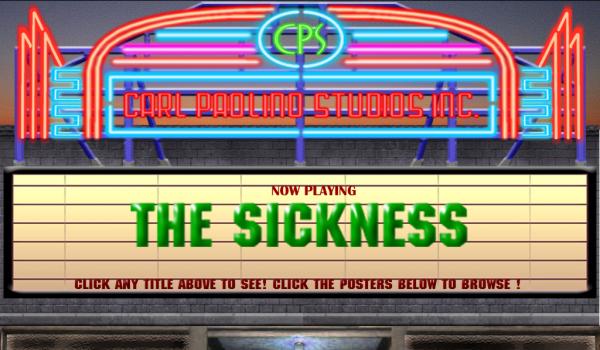
When we started our interview series we had certain characters in mind. Carl Paolino, of Carl Paolino Studios in NY, is the quintessential professional we were hoping to get our hands on. Carl's IMDB page alone is so diverse you wonder if its an amalgamation of several careers, with its various positions, titles and credits. His professional experience as a producer, director, writer, production designer, animator, visual effects guy, and make-up extraordinaire shows his diverse experience over his decades in the industry.
Since starting his own studio in the 90s, Carl and his team have had the opportunity to work on several large-scale productions, producing: stop-motion, visual effects, models and props. The studio created 600+ stop-motion puppets alone for the MTV series Celebrities Deathmatch (where Carl met his biggest idol as a long-standing Spiderman fan, Stan Lee).
Currently Carl and the studio are working on a short stop-motion animated film called “The Halloween Pranksta”, a film about a character named Pranksta, his reluctant sidekick and their Halloween hell in suburbia. Mark Hamill, of the illustrious Star Wars dynasty has signed on to lend his voice and talents to the project.
In Carl's 'free time' he teaches stop-motion animation puppet construction and makeup FX at the School of Visual Arts in Manhattan. Somehow we managed to pry some time out of his successful studio-managing, stop-mo schedule for him to offer advice to people aspiring to the industry:
What is your firm's focus within animation and what led your firm to have such a focus?
As a producer of stop motion animation, a craft that I have spent over thirty years appreciating and creating, our focus is to tell the particular stories that would benefit most from this style of animation. The design, texture and cross-breed of real sets and puppets and the hand-articulation of those puppets is so unique in the entertainment field, is what kept the format alive amidst the computer generated shorts and feature film today.
Fill in the blank: The future of animation is _________.
...to become the prime story-telling device within the entertainment industry, both commercial, experimental and educational.
What are the best and worst aspects about working in the animation field?
The very best aspect about working in the animation field is the total free-play of the imagination. There can be no limits to the depth of your storytelling. The worst are the old vestiges of networks and film studios long out-living their extinction; still holding to the notion that an animated film is both costly and time consuming to produce. As sure as live action block-buster films like “Paranormal Activity” and “Blair Witch Project” have proven to be produced for the smallest fraction of what they have generated at the box office, animation (thanks to the digital revolution) is next in line.
Among your firm's achievements, which one(s) are you the most proud of?
Among past achievements, that would have to be for creating the production line (puppets and sets) for “Celebrity Deathmatch”. This was back in the 90’s when MTV was more ambitious and creative, we did all of the production work in Manhattan. I would like to see that happen again. And as for our current slate, we are in production on “The Halloween Pranksta”, a stop motion animated Halloween film. Voice over star, Mark Hamill, is co-producing this project along with us. We expect to have it completed later this year.
What skills/qualities does your firm seek out when hiring new employees?
I look for artists who know-their-craft. I hear from college graduates all the time who say they can sculpt because they took a sculpture class in school. Taking one class does not put you in any position to compete on a professional level. I look for true passion; they must really love what they want to do. Working for me should not be looked at as a job, it’s an adventure.
What particular schools, if any, does your firm recruit new hires from? If none, where do you recruit new hires?
I am currently on the faculty of School of Visual Arts in Manhattan. So it is very easy for me to recruit from there. I have several students who have worked for me recently and I plan to hire more as the work load increases.
What advice would you give to aspiring animators?
Learn to tell a story correctly.
What were your most challenging projects, and why?
Any project that is headed by people who will not consider your opinion.
What kind of education did it take to get you where you are today?
I am a graduate of School of Visual Arts myself, but the best education I had was always the practical experience of working in the field.
What animation software packages does your firm prefer to use? Which one would you recommend to beginners?
Dragon (a stop motion animation program). It doesn’t get any better than that.
Could you share with us your best story about working in the animation industry.
I am sorry, but I only have a silly answer to that one. Decades ago, I watched the Rankin-Bass stop motion animated holiday specials on TV. I can remember watching them as a child and thinking, “…if I could only make films like that one day, I will be happy forever…”.
Do you think that there is an increasing or decreasing demand for animators overall? Why?
Definitely increased. The particular job may change to meet a certain need (so an animator should always hone and expand his craft), but as I stated in your second question, animation is the future of entertainment. There is no doubt about that.
Check out more interviews at Animation Career Review's Interview Series.
